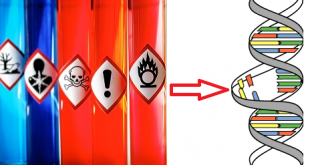Genetic male sterility (GMS)
Genetic male sterility is controlled by some nuclear genes called Male Sterile genes. It has been evident that this type of sterility is usually maintained by recessive genes (barley, mustard, pigeon pea, paddy) and less frequently by dominant genes (safflower).
The male sterile allele is m (mostly written as ms). So, a male sterile line has allele mm or msms.
How to maintain male sterile line?
Let,
Male sterile plant be A with allele mm.
Heterozygous male fertile line be B with allele Mm.
The male sterile line can be maintained by crossing both the lines A and B with an output of 1:1 ratio (male fertile : male sterile).
Check if you understand the following things:
- Seed parent: Produces seeds that can be grown into mature male sterile plants. The allele configuration is mm.
- Maintainer: It helps to maintain the male sterile line as the seed parent can’t produce any pollen (so, can’t fertile itself). The allele configuration is Mm (The last example was about maintainer and seed parent).
- Pollinator: MM

GMS Types
|
Phenotypic |
Structural MS | |
| Sporogenous/pollen MS | ||
| Functional MS | ||
|
Genotypic |
Environmental sensitive male sterility (EGMS) | Thermo sensitive male sterility (TGMS) |
| Photoperiod sensitive male sterility (PGMS) | ||
| Environmental non-sensitive MS | ||
1. Phenotypic
i) Structural male sterility: Anomalies in male sex organs (or missing the organs all together).
ii) Sporogenous/pollen male sterility: Stamen forms, but pollen absent or rare due to microsporogenous cell abortion before, during or after meiosis.
iii) Functional male sterility: Viable pollens form, but barrier prevents fertilization (anther indehiscence, no exine formation, inability of pollen to migrate to stigma or other factors that affect fertilization e.g extended style, pollen is glued together so can’t be released, e.g soybean, peas).
2. Genotypic
Genic male sterility (GMS): Mendelian inheritance due to nuclear not cytoplasmic genes.
Genic male sterility had been arisen as spontaneous mutants in most cases: high frequency of mutation. It was identified in 175 species. Here few reciprocal differences observe. It is mostly recessive or few dominant.
Many non-allelic genes are known in some species (e.g 60+ in maize, tomato 55 etc).
- Recessive: single genes ~70%; multigenes ~15% (monocot), ~23% (dicot); rest is dominant mutants ~7% (dicot) ~15% (monocot).
i) Environmental sensitive male sterility (EGMS):
MS gene expression occurs within a specified range of temperature and/or photoperiod (rice, tomato, wheat etc.). It may be 2 types:
a) Thermo sensitive male sterility (TGMS):
Sterility is at particular temperature e.g. In rice TGMS line (pei-Ai645) at 23.3°C (China).
-
-
- TGMS at high temparature is due to failure of pairing of two chromosomes at metaphase was evident.
- This abnormality led to abnormal meiosis, abnormal or sterile pollens.
- Anthers were shriveled and non-dehiscence male sterile.
-
b) Photoperiod sensitive male sterility (PGMS)
Governed by two recessive genes. Sterility is obtained in long day conditions while in short days normal fertile plant. On case of rice-sterile under long day conditions (13 hr. 45 min + Temp 23-29 C) but fertile under short day conditions.
ii) Environmental non-sensitive
Origin of GMS
- Inter-specific hybridization
- Genetic Engineering
- Chemically induced male sterility (CHAs)
- Spontaneous mutation
- Mutation by ionizing radiation
Application of genetic male sterility (?)
It is applicable in production of hybrids in both vegetatively propagated crops and fruits and seed yielding crops.
Examples–wheat, maize, barley, sorghum, sunflower, tomato and cucurbits.
Best safe and secure cloud storage with password protection
Get Envato Elements, Prime Video, Hotstar and Netflix For Free
 Plantlet The Blogging Platform of Department of Botany, University of Dhaka
Plantlet The Blogging Platform of Department of Botany, University of Dhaka






Reading your article helped me a lot and I agree with you. But I still have some doubts, can you clarify for me? I’ll keep an eye out for your answers.